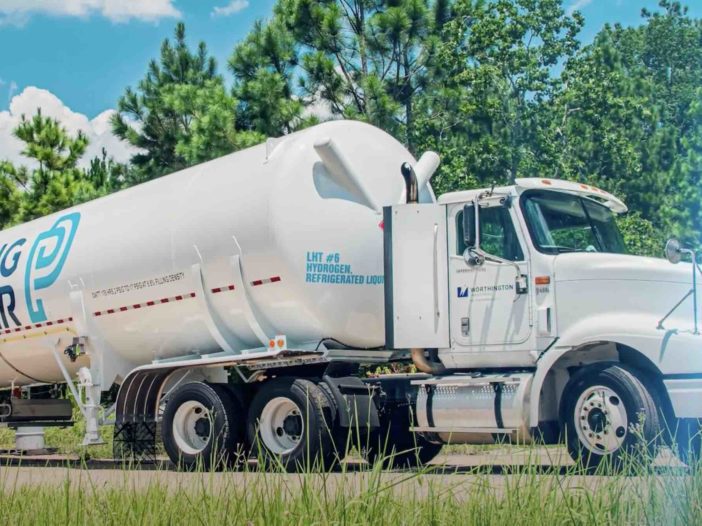
Iron ore billionaire and green energy evangelist Andrew Forrest says his Fortescue Future Industries will use its own electrolyser technologies after one of the world’s leading manufacturers pulled the plug on its joint venture plans.
The decision by New York based Plug Power to pull out of the joint venture would appear to be a blow to the Fortescue plans for the first stage of a green hydrogen plant in Gladstone, which it has touted as the biggest of its type in the world .
But FFI remained upbeat on Friday, declaring that it was developing its own hydrogen electrolyser technologies – both alkaline and PEM – to build electrolysers at the plant, and meet its 2GW annual run rate target.
The withdrawal of Plug Power from the venture is not a surprise, as RenewEconomy had reported last year that the Fortescue deal, and Australia, were not mentioned in its results and investor day presentations. Neither had it been several months earlier.
See: Is Fortescue looking for new technology partner for world’s biggest electrolyser plan?
In a business update on Thursday (Australian time), Plug Power CEO Andrew Marsh confirmed that Plug Power had withdrawn from the venture.
“We decided that we didn’t want to build a factory with them because we saw the economics, we could do better,” Marsh said. “So we really didn’t think that it was worthwhile to move ahead.
“We’re still working with them on electrolyzers. And look, there’s no better green hydrogen plant folks than us in the US. So we really don’t need a lot of help here.”
Plug Power and Forrest signed a letter of intent to create a 50-50 joint venture to build a manufacturing facility in Queensland in late 2021. It was planned that the factory would produce 2GW a year of hydrogen electrolysers, with potential expansion into fuel cells and refueling and storage infrastructure.
That factory near Gladstone, located in the heart of the state’s coal and gas industry, is being proposed by Forrest as part of his massive – but as yet largely unrealized – push into green energy, and also includes plans to also build wind turbines and solar PV cells.
Under that deal, FFI was to be the primary customer of the products manufactured by the joint venture, advancing its ambitions in decarbonizing its operations with stationary power and mobility applications running on green hydrogen.
On Friday, FFI chief executive Mark Hutchinson said the relationship with Plug Power would continue, and it would provide some electrolysers, but FFI is happy to go with its own technology.
“We’re going to need all the OEMs to chip in at some stage,” he told the Fortescue quarterly production report analyst and media briefing.
“But the feeling really was that we are advanced with our own technology. The IP is ours. We can do it at scale. I think Plug Power is very much locked in to a certain technology and to on a production cycle.
And what we’re good at here is building things at scale and that is exactly what we’re going to do on the electrolyzer side. So, the facility in Glaston will be going ahead as planned, nothing changes what the exciting thing is, it’s going to be Australian technology.
“And, and we’re going to do that on time it’s going to be our own technology. “
Under the deal with Plug Power announced in 2021, FFI was also purchasing 250MW of Plug Power’s electrolyzer solutions, which are used to create hydrogen and oxygen from water, for its Australian projects before the new factory is built.
Plug Power was due to supply these first electrolysers from its existing gigafactory in Rochester, New York, with delivery planned for the second half of 2022. It is not clear if those electrolysers were or will be delivered.
Giles Parkinson is founder and editor of Renew Economy, and is also the founder of One Step Off The Grid and founder/editor of the EV-focused The Driven. Giles has been a journalist for 40 years and is a former business and deputy editor of the Australian Financial Review.